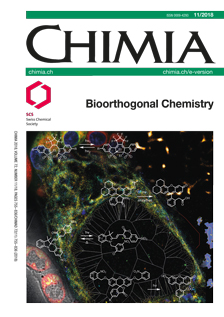Photochemically Active Dyes for Super-Resolution Microscopy
DOI:
https://doi.org/10.2533/chimia.2018.764Keywords:
Fluorescent probes, Live-cell imaging, Photoactivatable, Photoswitchable, Super-resolution microscopyAbstract
The development of super-resolved optical microscopies has revolutionized the way we visualize cell biology. These techniques strongly rely on the use of photochemically active fluorophores that display changes in their photophysical properties upon irradiation with light. Many reversible and irreversible photochemical transformations have been explored for this purpose, and different imaging techniques require specific mechanisms of photoconversion. In this review, we provide an overview of the most common strategies used for the development of fluorophores for super-resolution microscopy and give specific examples of state-of-the-art fluorogenic probes. Furthermore, we discuss their main field of application and possible directions for future developments.Downloads
Published
2018-11-30
Issue
Section
Scientific Articles
License
Copyright (c) 2018 Swiss Chemical Society

This work is licensed under a Creative Commons Attribution-NonCommercial 4.0 International License.
How to Cite
[1]
Z. Thiel, P. Rivera-Fuentes, Chimia 2018, 72, 764, DOI: 10.2533/chimia.2018.764.







